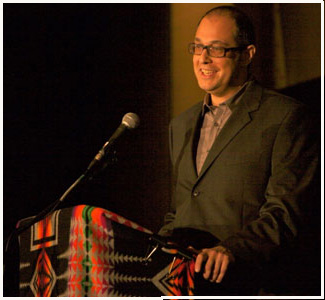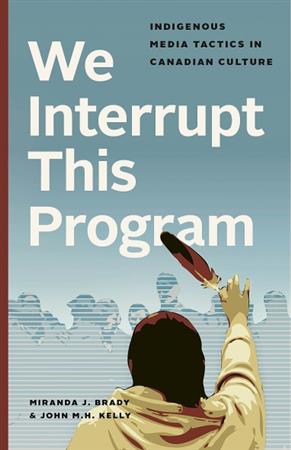By Roshan Danesh
Some politicians, journalists, business leaders, lawyers and others have adopted the practice of using the terms “consent” and “veto” interchangeably when discussing the role of First Nations in decision-making regarding lands and resources.
| Editor’s Note: This article was first published on December 28, 2016, in the Vancouver Sun. It has since appeared in a number of blogs. It is shared here under the "fair use" defense, for non-profit educational use pursuant to 17 U.S. Code § 107, |
This practice has increased recently as the United Nations Declaration on the Rights of Indigenous Peoples which enshrines the standard of free, prior and informed consent of Indigenous Peoples, is now a focus of federal government policy and has been endorsed in the platform of the New Democratic Party in B.C. in the lead-up to the May 2017 provincial election.
Talk of both ‘consent’ and ‘veto’ is also intensifying as pipelines are both approved and rejected.
‘Consent’ and ‘veto’ are distinct. The interchangeable use of the terms — whether out of ignorance, or as a deliberate attempt to create fear or confusion — is wrong and should stop.

Four points are fundamental to understanding veto, consent and their relationship. First, the Supreme Court of Canada uses both ‘consent’ and ‘veto’ and does not use them interchangeably.
For example, in the 2004 Haida decision the Court said that the process of consultation “does not give Aboriginal groups a veto over what can be done with land pending final proof of the claim.” At the same time, the Court also said how “full consent” may be required on very serious issues.
We have to assume that this choice of distinct terms is not a result of sloppiness by the Court. They chose their words with purpose.
Second, to understand these terms we need to remind ourselves of what reconciliation is all about. To use the Supreme Court’s words: “Put simply, Canada’s Aboriginal peoples were here when Europeans came, and were never conquered.” That simple fact means that we must “reconcile pre-existing Aboriginal sovereignty with assumed Crown sovereignty.”
Stated another away, the jurisdiction, laws, authorities and relationship to the land of Aboriginal groups — characteristics of a sovereign — have never ceased to exist as a result of the settlers arriving from Europe, establishing colonies and ultimately Canada. Our work of reconciliation today is to establish — at long last — proper relations between these respective Aboriginal and Crown jurisdictions and titles.
This basic understanding of reconciliation explains why ‘veto’ and ‘consent’ are used, what they share, and how they are different.
The Crown and Aboriginal groups are different decision-makers acting under different authorities. One does not ‘veto’ the decision of the other. Neither has the power to reach into the other’s jurisdiction and trump the decision of the other. The relationship is one of difference and distinction — not of inferiority and superiority. Further, reflective of our understanding of government power in Canada’s constitutional order, no government has absolute power.
Third, precisely because the Crown and Aboriginal groups are different decision-makers with different authorities, contexts will arise where absent alignment between the decisions, which may be provided by Aboriginal consent, things may not be able to proceed. At the same time, we know, for example in relation to Aboriginal Title, there are some narrow contexts where despite a lack of consent, something may proceed given its particular character and compelling nature and demonstration that Indigenous rights and responsibilities have been respected.
All of this focuses us on the real work we need to do — to build the relationships, structures, processes, understandings and agreements between Indigenous and Crown governments that ensure collaboration, alignment and effectiveness in reaching decisions and moving critical shared work forward together. This simply means refocusing our work on the infrastructure of positive and collaborative Indigenous and Crown relations, rather than the adversarial approaches of litigation and negotiation on which hundreds of millions of dollars are currently spent.
Fourth, in addition to being inaccurate, a focus on ‘veto’ is economically risky for all. ‘Veto,’ and the spectre of it, breeds uncertainty about who can make decisions, whether they are sustainable once made, and constant agitation about what others may decide to do. Effectively, it invites conflict about land and resource decision-making which undermines trust and integrity in decision-making processes.
On the other hand, by grappling with how we build the patterns needed for consent, we are fostering strong, healthy, trustful and collaborative relationships. A rhetoric that confuses and conflates veto and consent actually does damage to the future and the healthy economy everyone needs.
Roshan Danesh is a lawyer, conflict resolution innovator, and educator whose areas of work, teaching, and writing include conflict resolution, peace-building, constitutional law, Indigenous rights, inter-ethnic and inter-religious dialogue, policy development and implementation and organizational dynamics and cohesion. Roshan completed his Doctoral studies at Harvard Law School, and has taught at many academic institutions around the world including the University of British Columbia (Vancouver), European Peace University (Austria), the Justice Institute of British Columbia (Vancouver), University of Victoria, and Landegg International University (Switzerland).
